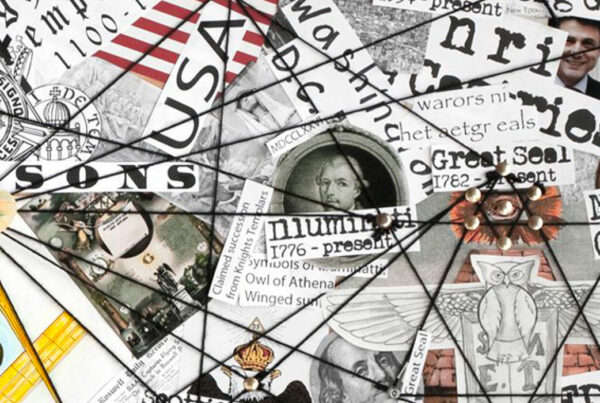In a world where information circulates rapidly and in large quantities, it is essential to adopt a critical stance towards the content we consume and share. Recognizing fake news takes a little practice!
Often, this type of information is a clever mix of truth and falsehood. Its authors sometimes start with authentic documents (quotes, photos, videos, etc.) but misinterpret them or take them out of context to draw completely false conclusions.
This “fake news” can influence public opinion, fuel misinformation, and sometimes have serious consequences, so before sharing information, take the time to analyze it! Here are a few habits to adopt.
1- Be wary of word of mouth
The first question to ask yourself when you receive information is: “How did this information reach me?”
I received a text from a cousin who has a friend who is an intern in a medical office, and who saw on a Facebook page that…
The longer the path between the source of the information and you, the more reasons there are to doubt it. In fact, one of the weapons of a rumor is the number of people contributing to it. Give preference to information received directly and without intermediaries, from serious media sources: the World Health Organization, the government website, news outlets such as franceinfo.fr, Le Monde, France 2, France Inter…
2- Look beyond the title
The first challenge of a fake news story is to make sure you look at it. And what makes you want to click to find out more than a sensational headline?
Often, fake news will start with a clickbait title. It may sometimes be written in capital letters, sometimes with exclamation points, or sensational wording. Faced with such a call to click, caution is necessary.
Examples:
“Incredible! This scientific discovery will CHANGE THE WORLD forever!”
🚨 “Shock: this miracle drug cures everything, but the labs want to hide it!”
👀 “You will NEVER believe what happened to this celebrity!”
📢 “Scandal: what your doctor isn’t telling you about vaccines!”
These titles play on emotion, fear, sensationalism, and curiosity to push for clicks, often at the expense of the truthfulness of the information.
The best reflex, to know if the information is true, is to read the entire article.
3- Identify the source of the information
If you decide that the article deserves your attention, three key points must be considered: who wrote it, on which platform/site, and when?
Where is the information published? Check the nature of the site where the information was found. The “legal notice” or “about” tabs generally allow you to identify the type of site you are consulting (blog, humor site, institutional site, etc.). If it is a social network, verify the nature of the account that shared/disseminated the information (parody account, institutional account, etc.).
Who is the author? Is it a journalist? A specialist in the subject being discussed? A citizen? Ask yourself about their objective—are they trying to inform us, share their point of view, or manipulate us?
Another detail to check: the publication date of the information. Information that is several days, weeks, or months old can quickly become outdated. It is therefore always preferable to consult recent sources, or at least verify that there have been no changes since the article was published.
4- Be wary of shaky arguments from authority.
Very often, fake news is accompanied by a reference to a person who is supposed to be an authority: a renowned professor, a team of scientists at the cutting edge of research… This mention of a specialist may of course be genuine. But sometimes, this figure is only used to lend credibility to the rumor in the eyes of its audience.
When faced with these references, ask yourself the right questions: What are their names? Who are they? Where do they work? Very often, fake news will not allow you to answer these questions.
Another point to watch out for: the use of complex, unexplained vocabulary. A message that explains crucial new information to you in sophisticated terms deserves verification. Why should you believe a message that you didn’t even understand?
5- A rumor wants to be shared, don’t help it.
A rumor draws its strength from the number of people who spread it. A fake news story that doesn’t go viral is not really one. That’s why, very often, the message containing the fake news will insist (heavily) that you share it with those around you:
- “Share this information with your family, friends, and acquaintances”
- “Share widely…”, etc.
Faced with this kind of request, your fake news radar should switch on!
6- Control your emotions
Fake news aims to shock you, outrage you, worry you, move you emotionally or give you hope, with the goal of making you share the information.
In addition, they exploit the confirmation bias: we all tend to believe what reinforces our opinions. Social networks and search engines lock us into a cognitive bubble by offering us content similar to what we have already interacted with.
👉 Vary your sources and get information from places other than social networks!
7- Decipher the images
Images are regularly misused or manipulated to deceive internet users. Pay attention to details that sometimes reveal the deception.
- Do a reverse image search on an image search engine to see if it has already been published elsewhere and whether it has been altered.
- Check the publication date: some old images are recycled and presented as recent.
link to resources > How to verify an image or a video circulating on social networks?
8- Read the comments
Although comments may contain incorrect information, some internet users point out the falsity of a piece of information, providing arguments and evidence in the form of links to reliable sites.
⚠️ Read the comments carefully and cross-check the sources!
9- Go back to the source of the information
This is probably the best advice we can give you in your quest for truth. If some information seems doubtful to you, or if you want to be sure it is authentic:
- Look up the cited sources and consult them directly.
- Use a search engine to see if the information has been confirmed or denied.
- Verify images and videos with reverse search.
Very often on the internet, information is shared, spread, and sometimes also distorted, taken out of context, or misinterpreted. It is therefore important to find out where the information originally comes from.
10- Cross-reference multiple sources
Whatever the result of your investigation, it is always safer to cross-check several sources, especially if the information comes from a social network or an unreliable site.
✅ Information shared by several reliable media outlets has a good chance of being authentic.
TO CONCLUDE, DO NOT SHARE INFORMATION THAT YOU HAVE NOT VERIFIED!
If you don’t have time to verify information, avoid sharing it on social networks, so as not to fuel rumors. Try to take a step back and look at this content critically.
Beware of yourself! Indeed, we tend to look for/appreciate information that goes our way, that confirms our opinions. Social networks and search engines know this very well and regularly offer us content similar to those we liked or interacted with. This is how we gradually lock ourselves into our own “cognitive bubble” and end up convincing ourselves that a piece of information is true. So don’t hesitate to consult new sources and get information other than through social networks!
link to resources > What is confirmation bias?






